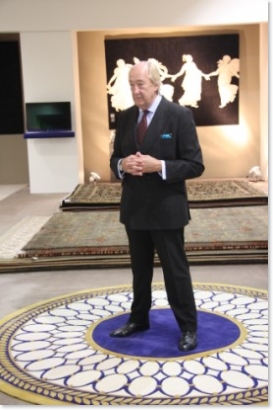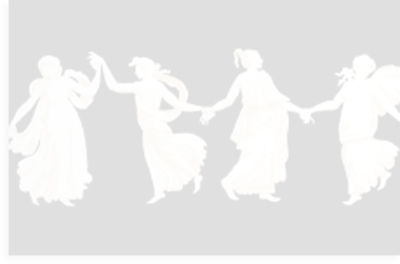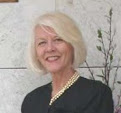Here follows a book review from a crumbling, yellowed newspaper article from ‘The Staffordshire Sentinel’ dated March 30, 1926 [the book was published in 1925] which was found by me in an old Wedgwood-related book. The typeface is very small, requiring some reading, especially in the fold-lines, by magnifier! I always love it when my passions for Wedgwood and genealogy collide!
“Wedgwood Pedigrees. Being an account of the complete family reconstructed from contemporary records. By the Right Hon. Josiah C. Wedgwood and Joshua G. E. Wedgwood, is published by Titus Wilson, 21s. net. The “Times” Literary Supplement gives the following delightful review of the book:
No man is entirely individual. He is the product of his line through past ages. Much of his character is born of incident in some past century to some perhaps forgotten forebear. Environment may modify or develop, but it does not replace in one or two generations the characteristics of ancestry, and much in the behaviour of the living may be explained by a history of the dead. Thus genealogy has a special importance quite apart from the natural pride in illustrious descent. And undertaken in the proper spirit the construction of a family pedigree may be accounted a virtue and a public service. In the United States much progress has been made in scientific genealogical research; and apart from those who endeavour to link themselves with the great ones of the past there are many who have spent much time and money in the preparation of pedigrees both honest and accurate. England has lagged behind in recent years but in this volume of Wedgwood pedigrees there is proof that some at least have both the skill and the patience to undertake such work.
The authors’ task has been simplified by the relative rarity of the name. There is only one Wedgwood in England, and it is a fairly safe presumption that all bearing the name of Wedgwood came from the farm of Wedgwood, near Tunstall. Thus the search was narrowed in its earliest stages to an examination of all records which dealt with Wedgwood and the surrounding area of country. The farm was one of the frank-pledges of the Manor of Tunstall held after the Conquest by the Audleys. The first Wedgwood known to history was, as the authors note with some glee, a rebel, one Richard, who was given a safe conduct to come to the King’s Court in June 1266. But his fate is covered by the mists of the past.
When first the authors began their researches into the family history they relied in the main on the Tunstall Court records, and with some aid from other documents constructed a skeleton pedigree of Wedgwoods from 1299 to 1589. The references to the family were not many, and all were short. Much had to be presumed, and there was no definite proof that the persons in the pedigree had been linked correctly until at a recent date the Horton Court Rolls were discovered and gave evidence that the deductions had been correct. At first it was a family of small but respectable farmers-despite one or two murderers, who appear to break the monotony. As the years passed so did the circumstances of one branch, that of Heracles, improve, until in the sixteenth century it rose to the squirearchy, coat armour, and a place in the county. Marriages helped, but some credit must be given to the character of the race. The Heracles branch ended in the male line in 1757, and their wealth left the family.
But by this time another branch of the family was well on the road to fame. In the seventeenth century Wedgwoods had settled in Burslem, and about 1650 Thomas of that name began operations as a potter. Josiah Wedgwood, whose name is now a household word, was a descendant of this Thomas, and in 1767 he settled at Etruria, where he built the still famous works. He was a man of strong opinions, a Radical Dissenter, and a believer in Parliamentary reform. His character survives, according to the authors, in the family today. They say:-
“Wedgwoods do not mix. They are not happy talking to outsiders-not superior, but shy with the shyness of men who have a complete world of their own...Seven generations brought up upon Miss Austen and Macaulay cannot acclimatize themselves to the sort of people who know whether pheasants do or do not eat mangle wurzels and are aware that the Grand National is not a flat race. They never made a bet in their lives, not because they would not have done so with pleasure if it would have broken down the barrier between themselves and mankind, but because they did not know how the operation was performed. If a Wedgwood or a Darwin ever got drunk, it must have been in the pursuit either of scientific knowledge or of an illusive camaraderie with those who really liked that sort of thing.”
A pleasant picture is given of the relations between masters and men of the Wedgwood’s high conception of an employer’s responsibility. “Paternal” care was carried, one might think, a little far on occasion. “After the midday meal was over, or in the evenings, my father read aloud to the ‘hands’-read Macaulay and Mill. ‘Hands’ that will stand that will stand most things.” But that affection of high order exists between the Wedgwoods and their employees is obvious.
One Wedgwood of this line died a Guards Colonel, and, as an ensign in the Scots Fusilier Guards, was with his company in Hougomont throughout the day at Waterloo. Another Wedgwood (Josiah 1768-1843) paid an annuity to Samuel Taylor Coleridge. A branch of the family emigrated to America in 1630 and descendants still exist, as the long lists given in the book prove. Other branches settled in Warwickshire, Cumberland and Yorkshire. All these are included in the authors’ task. Their work has been well done. Few family genealogies have been constructed with such care rendered to history. There are 120 pages of indices containing sufficient material to permit of the reader testing for himself the accuracy of the authors’ deductions."
We love sharing Wedgwood family information knowing there are MANY Wedgwood descendants around the globe. Hopefully in our musings sometimes we might find a snippet that not all the family members know. Watch for another article soon from a member of the "American branch" of the Wedgwood family. And be sure to browse our book category on the website, we have some Wedgwood family history books for sale. Click the title of this post to see a spectacular old leatherbound volume of one family history, and from there you can click the category name to see all our books.
Thursday, February 10, 2011
Subscribe to:
Post Comments (Atom)


















No comments:
Post a Comment